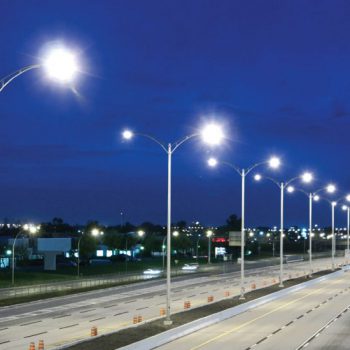
Cloud (SaaS) vs On-premises Software. Which is Best for Smart Streetlight Management?
- Posted by SolutionsTeam
- On March 24, 2022
- 0 Comments
On-premises software is physically installed at an organization’s location, on their hardware. Cloud or SaaS software is hosted in a cloud service provider’s server. Which is the best option, and why?
What is on-premises software?
On-premises (on-prem) software is physically installed in an organization’s location. The application and its data are stored on its servers. The organization is responsible for maintaining the hardware and software. This software is “bought” by the end customer, with or without a maintenance and support contract.
What is cloud service software?
Normally cloud SaaS (Software as a Service) is hosted in a cloud service provider’s (such as Amazon’s AWS, Microsoft’s Azure) or software vendor’s own server. The application and its data are stored in the cloud. The vendor who is delivering the service is responsible for maintaining the hardware and software. This kind of service is “subscribed” to by the end customer. SaaS utilizes the internet to deliver applications to its users.
Comparison
| On-prem Software | Cloud SaaS Application | |
|---|---|---|
| Deployment | Installed locally on company’s own hardware | Hosted on vendor’s servers (private cloud) or a public cloud provider’s server (AWS, Azure, etc) |
| Access | Accessed from within company’s firewall or via VPN | Accessed via the internet |
| Initial Costs | High upfront investment | Lower upfront investment |
| One-time perpetual license fee | Subscription fee (monthly or annual) | |
| You may need to purchase additional server and networking infrastructure and software | Everything runs on the cloud vendor’s hardware | |
| Additional costs | Customization & implementation | None |
| Hardware | ||
| IT personnel | ||
| Maintenance | ||
| Network infrastructure | ||
| Running | You are responsible for everything | The cloud vendor takes care of everything |
| You need to maintain all the hardware and software yourself | Cloud vendor maintains all infrastructure | |
| You may need dedicated client software to access the on-prem application | Applications are accessed thru a web browser. No software required on the client. | |
| Application may only run on desktop unless you have a private intranet | Application can be accessed from anywhere using browser on desktop, mobile or tablet | |
| Security | You are responsible for keeping all server software and applications up-to-date | Cloud vendor ensures all software is up-to-date |
| On-prem systems are more vulnerable to security breaches due to missed software updates and lack of dedicated security personnel | Cloud systems are less vulnerable due to more robust security policies and testing, and dedicated security personnel |
How to choose between the two?
While choosing between these two depends on your availability of resources, budget, your organization’s future plans etc, the following may help you decide.
On-prem software could be an option:
- If you already have the infrastructure in place and have plans to keep it, it might make sense to do an on-prem deployment
- Your organization’s policies demand hosting the software within your premises
- You do not have any constraints on the high upfront investment
Cloud service could be an option if:
- You would like to avoid the huge upfront costs
- You do not have an existing infrastructure that is supporting this kind of application
- You want to move to a cloud model to save costs and free up resources
- Your IT resources are limited
- You are concerned about security
What is recommended for smart streetlight management software?
At Dhyan, we recommend going with the cloud option as it has significant advantages over on-prem:
- Lowers your upfront costs, freeing budget for other development initiatives
- Your IT resources are freed up thus saving additional costs
- Security is enhanced as all software updates and security testing is handled by cloud vendor
- It enables easy integration with other smart city applications
- You don’t have to maintain the software and hardware, saving ongoing maintenance costs
- You can access the system from anywhere through the internet
- If you are a systems integrator, it saves a lot of time and money in maintaining different deployments



0 Comments